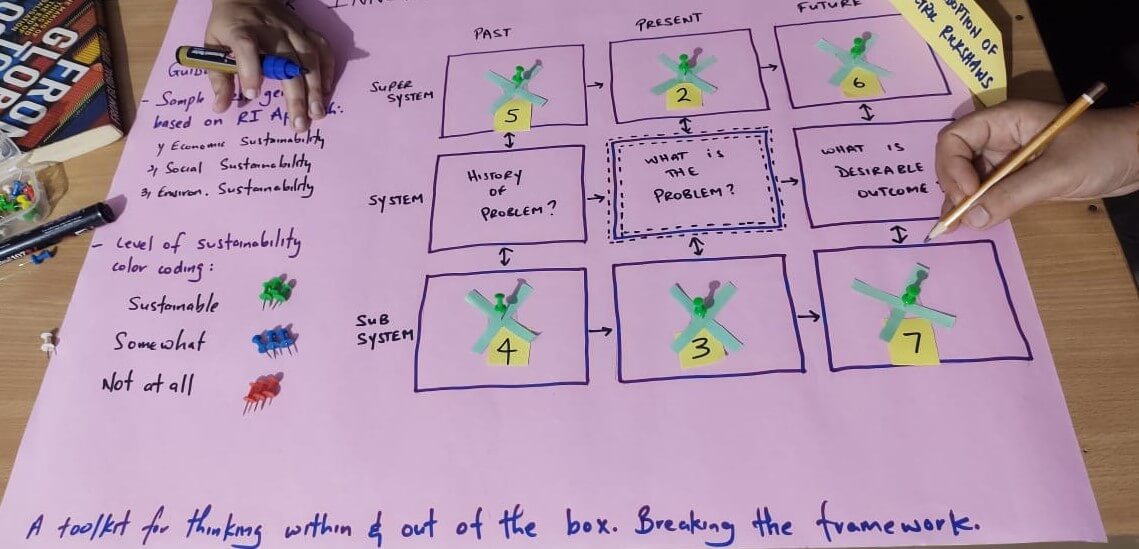Sustainability Futures of Innovation using TRIZ ‘9-windows’ tool
Vairaj Arjune, Centre for Studies in Science Policy, Jawaharlal Nehru University; Krishna Tripathi, Centre for Studies in Science policy, Jawaharlal Nehru University, New Delhi
virPrague 20: Experiments in Collaboration and Critical Participation
As Science Policy researchers, we attempt to explore researchers inertia in dealing with challenges relating to product innovation, team building or personal development. Using our sustainability model (TRIZ + RI Approach) we can stimulate creative thinking beyond a given present problem and break psychological inertia to find possible futures solution. The proposed activity relies on using a 3 x 3 matrix diagram with pre-formulated sample questions on the sustainability of emerging innovations. With technology and innovation becoming an inherent component of modern societies, inculcation of the issue of sustainability in new emerging innovation is eminently crucial which in turn poses the questions: what is the meaning of sustainability in the innovation process? And what is sustainable innovation?
Using TRIZ '9-windows' tool we can attempt to clearly define the innovation problem. The theory of inventive problem solving, commonly known as TRIZ represents one of the most emerging technology foresight tool. TRIZ comes it play at a threshold limit where traditional methods of solving complex problems is non-existent and requiring creative thinking. In this activity, we augment the ‘9-windows’ tool to incorporate sustainability questions for innovating products. We employ our sustainability model by asking sample questions (derived from discussion with experts) relating to the social, environmental and economic aspect of innovations, for example, Electric Mobility.
Each of the sample questions will be asked and answers will be graded in terms of ‘very sustainable’, ‘somewhat sustainable’ and ‘not at all sustainable’ corresponding to the color scheme – Green, Blue and Red. Using this model, we are encouraged to design or modify an innovation in a more holistic manner to include not only what happens when a product is commercialized for the society but also other aspects of the product such as environmental aspect – what happens after usage of a product. This approach is also useful for identifying the potential sustainability issues of innovation either at the early stages of innovation or to correct flaws in existing innovative products.

